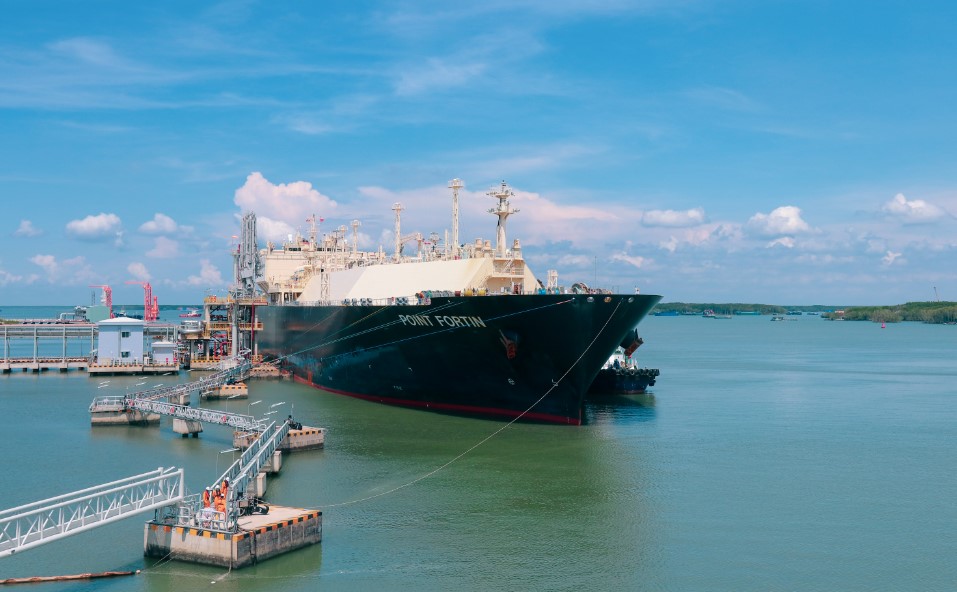Spot liquefied natural gas (LNG) freight rates rose this week, while European prices remained steady compared to the previous week.
Last week, freight rates in the Atlantic rose by $5,500 per day and the Pacific rates dropped by $1,250 per day.
“Freight rates this week have continued to increase, with the Spark30 Atlantic rate increasing by $4,250 to $52,500 per day, and the Spark25 Pacific rate increasing by $750 to $45,250 per day,” Qasim Afghan,” Spark’s commercial analyst told LNG Prime on Friday.
“The last two weeks have seen the largest week-on-week Spark30 freight rate increases of the year thus far,” he said.

LNG freight rates remained steady during almost this entire year despite the fact that LNG carriers are still avoiding the Suez Canal due to the situation in the Red Sea and the lower LNG transits in the Panama Canal due to a drought in Panama.
This caused shipping firms to choose longer routes to deliver their cargoes to Asia.
According to data from S&P Global Commodity Insights, a record number of 123 US LNG cargoes have travelled to Asia via the Cape of Good Hope so far this year.
Platts, part of Commodity Insights, said in a report last week, that so far this year, 16 US LNG cargoes have reached Asia via the Panama Canal and less than half of that have transited the Suez Canal.
In comparison, the Panama Canal saw 64 cargoes make the journey between January-May in 2023, while the Suez Canal saw 33, Platts said.
European prices almost flat
In Europe, the SparkNWE DES LNG front month was almost flat compared to the last week when they reached a yearly record high.
“SparkNWE DES LNG prices stayed relatively steady this week, with the front month price for June delivery assessed at $11.026/MMBtu and at a $0.155/MMBtu discount to the TTF,” Afghan said.
He said this is a $0.02/MMBtu week-on-week increase in DES LNG price, and a $0.02/MMBtu narrowing of the TTF discount.

European prices rose last week following an announcement by Austria’s OMV indicating a potential disruption in gas supplies from Russia’s Gazprom to Austria due to a court ruling.
OMV said it would “still be able to supply its contractual customers with gas from alternative, non-Russian sources, through its extensive diversification efforts over the last several years.”
This includes long-term LNG supply contracts, which are imported into Europe via OMV’s LNG regasification capacities at the Gate terminal in Rotterdam.
Data by Gas Infrastructure Europe (GIE) shows that volumes in gas storages in the EU continued to rise and were 69.48 percent full on May 29.
Gas storages were 67.72 percent full on May 22, and 68.48 percent full on May 29 last year.
JKM at around $12/MMBtu
In Asia, JKM, the price for LNG cargoes delivered to Northeast Asia, for July settled at $11.960/MMBtu on Thursday.
Last week, the JKM rose above $12/MMBtu for the first time since December last year.
JKM for July settled at 12.255/MMBtu on Thursday last week and dropped to 11.940/MMBtu on Friday.
State-run Japan Organization for Metals and Energy Security (JOGMEC) said in a report earlier this week that JKM rose last week to $12s due to increased demand in Asia for the summer season and increased electricity demand due to the heatwave in India, as well as supply uncertainties such as troubles at the Gorgon LNG plant.
Due to high demand for power production, First Gen recently imported a spot LNG cargo and is seeking another LNG cargo for delivery in July to its FSRU-based import terminal in Batangas, Philippines.
PetroVietnam Gas recently also imported a spot cargo at its Thi Vai LNG terminal to meet power demand during heatwaves.
Gorgon LNG resumes full ops
US LNG exports rose to 26 shipments in the week ending May 29 compared to 23 shipments in the prior week, with the Freeport LNG terminal shipping six cargoes during the period, according to the EIA.
Compared to the previous week, Freeport LNG sent one cargo more.
Freeport LNG, the operator of the 15 mtpa liquefaction plant in Texas, told LNG Prime on May 16 it has resumed operations at all of its three liquefaction trains.
The LNG terminal operator said on March 20 that only the third liquefaction train was operating.
Chevron Australia, a unit of US energy giant Chevron, told LNG Prime on Friday it has resumed full production at its Gorgon LNG terminal in Western Australia.
“Chevron Australia has resumed full LNG production from the Gorgon gas facility with the safe re-start of a production train on Wednesday, May 29 (AWST) following an outage,” a Chevron Australia spokesperson said.
The company said on May 3 it was working to resume full production from its Gorgon LNG terminal following a “mechanical fault” which affected one LNG production train.
The fault occurred on April 30 in a turbine, and the repair activities at the 5.2 mtpa train were expected to take at least five weeks.

